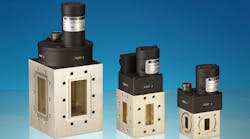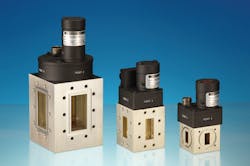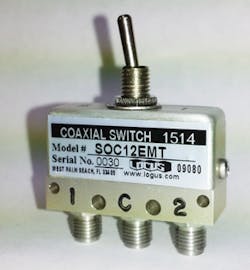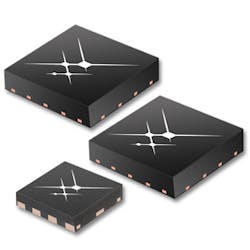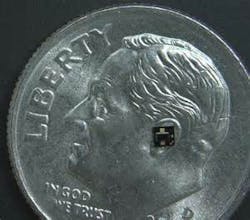Selecting Electromechanical and Solid-State RF Switches
This file type includes high-resolution graphics and schematics when applicable.
Switches provide control in RF/microwave systems, turning power on and off and channeling signals from one branch of a circuit or system to another. They come in many shapes and sizes, and are based on a number of technologies, changing contacts by electromechanical functions or by the electronic behavior of semiconductors like PIN diodes and field-effect transistors (FETs).
Generally, solid-state semiconductor-based switches are smaller and lighter than mechanical models, and can fit into tighter spaces in a circuit layout. Solid-state switches are also capable of fast switching speeds compared to mechanical switches. But the small size usually means a compromise in power-handling capability compared to a larger electromechanical switch.
In addition, the continued maturity of microelectromechanical-systems (MEMS) switches in recent years has provided a switch technology that falls midway between the characteristics of solid-state and conventional electromechanical switches. They feature mechanical switching operation with the small feature sizes associated with semiconductors.
Going Electromechnical
Why choose one RF/microwave switch type over another? In some applications, where there is a clear need to channel high-power signals, such as continuous-wave (CW) power levels of hundreds of watts or peak power levels of thousands of watts or more, the limited (millisecond) switching speed of an electromechanical switch may prove adequate for many systems. Such switches are capable of extremely broad continuous frequency ranges, such as the dc-to-18-GHz range common to electronic-warfare (EW) and military-radar applications.
Electromechanical switches incorporate some form of physically moving switch contact to close a circuit and transfer signals from one part of a switch component to another. For higher-power applications, these switches are typically constructed with waveguide interconnections (Fig. 1) for use in specific waveguide frequency bands, often for satellite-communications (satcom) systems.
Of course, all electromechanical switches are not created equal. Depending on the configuration, they may not be suitable for hot-switching of high-power signals. A rotary electromechanical switch, for example, rotates an electrical contact among different switch positions.
When it is between positions, however, it presents an infinite voltage standing wave ratio (VSWR) to the source, with the switch essentially acting as a termination for high-power signals and ultimately suffering damage. For that reason, the hot-switching power rating of any type of RF/microwave switch should be confirmed before it is specified for any application requiring high-power hot switching.
Solid-State Takes On Kilowatt Power
For high-power pulsed applications, such as in radar systems, solid-state switches based on PIN diode switch elements have shown the ability to handle kilowatts of peak power through microwave frequencies. In such a switch, a PIN diode allows current to flow with low impedance in one direction (when biased with a positive voltage) while blocking the flow of current with a high impedance in the other direction (when biased with a negative control voltage).
Although PIN diode switches may lack the high average power-handling capabilities of electromechanical switches, they are capable of somewhat faster switching speed than electromechanical switches in the microsecond range. PIN diode switches typically achieve high off-state isolation of better than 40 dB with low insertion loss in the on state.
This tradeoff of switching speed for power-handling capability continues with solid-state switches based on GaAs FET nonlinear switching elements, which can reach nanosecond switching speeds but typically less than 1 W (+30 dBm) signal power. GaAs switches are capable of extremely broadband operation through 40 GHz, depending on choice of interconnection. They also offer lower-frequency (down to dc) operation than PIN diode switches, when dc-coupled operation is required. On top of that, GaAs switches tend to suffer less from video leakage between switch ports than PIN diode switches.
In terms of package styles, both solid-state and electromechanical switches come in housings with coaxial or waveguide interconnections (Fig. 2). However, they are also being designed more frequently into drop-in or surface-mount-technology (SMT) packages in support of design miniaturization (Fig. 3). All types of switches may include internal terminations or rely on external terminations to properly terminate an unused switch port in a system’s characteristic impedance, typically 50 ⦠for RF/microwave systems and 75 ⦠for cable-television (CATV) systems.
In general, the switches are available with different numbers of poles and throws, such as single-pole, single-throw (SPST) and single-pole, double-throw (SPDT) varieties, and as absorptive or reflective units and with latching or failsafe switching functionality. Absorptive switches present a low VSWR at the switch port that is not selected, while reflective switches exhibit a high VSWR at any unselected signal path. A failsafe switch features a default position and requires applied power to change to any other switch position. With loss of power, it will return to the default position, whether normally open or normally closed.
A latching switch, on the other hand, will draw current to maintain a position, using a pulsed dc voltage command to change positions. When a latching switch loses power, it will remain in its last position. A latching switch requires power to change positions, but does not require power to remain in each position.
Switches with Magnetic Personalities
Electromechanical switches have evolved to achieve higher operating lifetimes using magnetic rather than purely mechanical contact motions. Magnetic switching results in less mechanical wear, extending what was once considered a normal switch lifetime of 100,000 switching operations to much longer lifetimes of typically millions of switching operations. Less physical wear also means less performance degradation over time, with consistent performance provided for essential switch performance parameters such as insertion loss, isolation, and VSWR, even after millions of switching operations.
Another type of electromechanical switch that employs the use of magnetic actuation is the ferrite switch, which is actually a form of electrically reversible ferrite circulator. It uses magnetic fields to change switch positions, with applied current magnetizing a resonator formed of ferrite substrate material. In terms of power-handling capability, a ferrite switch is typically somewhere between a rotary electromechanical switch and a PIN diode switch, and has been used in applications such as fire-control radar systems that use multiple antennas for identification. A ferrite switch enables the use of a single signal source for multiple radar system antennas.
Ferrite materials have also been the basis for toroidal waveguide switches, where multiple phase shifters are used to achieve the switching function. By incorporating a waveguide tee, input signals can be divided, shifted in phase, and then recombined for addition or subtraction, depending on the output port. The choice of ferrite materials in such switch designs is critical, since operating power and temperature can affect performance, with increased insertion loss often occurring at elevated power levels.
A MEMS Approach
High-frequency switching functions have also been implemented with MEMS technology, which combines many of the benefits of solid-state and electromechanical approaches. MEMS switches are electromechanical in nature, with low loss, high isolation, and long operating lifetimes, but are fabricated with semiconductor-type processes and dimensions (Fig. 4).
MEMS switches, which consist of electronic and mechanical sections, offer the reliability of millions of switching operations and frequency operation into the millimeter-wave region. Switch actuation is most often by electrostatic means, although MEMS switches have also been designed with magnetostatic and piezoelectric switch actuation. They are capable of microsecond switching speeds with reasonable isolation and relatively low loss. MEMS switches have gained favor in portable and mobile electronic designs due to their small size, low power consumption, and relatively low cost.
